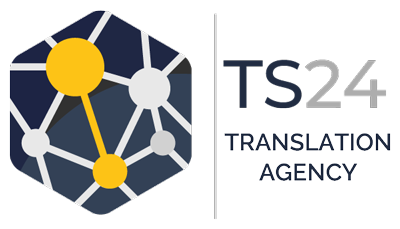Can Cultural Factors Affect Your Translation?
When it comes to languages, a vast majority of the public doesn’t (unfortunately) spend their time questioning and contemplating factors which affect the accuracy and reliability of professional translation services. Nonetheless, and this is perhaps especially true within the corporate or business environment, it is highly likely that at some point, you will find yourself in a situation where translating documents or materials is necessary in order to either successfully approach the target audience or customers or for you to understand the content of those documents fully.
As a result, having even the slightest grasp of factors which can affect the accuracy and reliability of a translation can give you a truly great advantage within your workplace.
In order to help you with this, we’ll take a look at a particular factor, which in the eyes of many professional linguists and language experts, plays an absolutely vital part during the translation process, and which can directly affect how the translation – and by its extension, the brand you represent– is perceived abroad – and the factor in question is culture.
Where does ‘culture’ really fit in the translation process?
Generally speaking, ‘culture’ can be an extremely open concept. There are several different factors that can be a part of the culture, and each of them can often be perceived as an individual aspect or one that strongly correlates to the others.
Nonetheless, within the translation process itself, the concept of culture can usually be limited to any factors which can directly or indirectly affect how the translated materials are perceived by the target audience. As a rule of thumb, some of the most significant factors a professional linguist ought to carefully consider when converting content (particularly true for marketing and advertising materials) are aspects such as religion, history, customs and traditions and in some instances, even the current political situation within the target market.
Each of the factors mentioned above can alter how your translated materials are perceived abroad. If, for example, your content consists of language or phrases which although perfectly fine in the native language, may, however be considered insensitive by some when translated, providing them in the context of the country’s history or religious views, your brand image might be severely damaged.
Tip: Not sure what to look for when choosing a translation agency? Read our latest guide to finding the best translation agencies.
Crucial, but often overlooked
Recently, a study has revealed that most of the UK respondents would not consider the target country’s cultural aspects to be a factor which can affect the reliability of a translation. Unsurprisingly, a vast majority of respondents believe that the reliability of the translated documents can be fully measured in linguistic terms, such as grammar or words chosen.
When discussing this issue with some of the industry leaders, however, we can then truly understand just how vital culture really is when it comes to professional translations. Yet, another reason why professional human translators may be more accurate than any AI-driven translations.
A senior translator at our agency personally considers culture to be one of the two most significant factors during the translation process, right beside linguistic factors. As Socio-cultural aspects play such an important part during the translation and localisation processes, Translation Services 24 works solely with native speakers of the target language, allowing us to be extremely reliable, accurate, and culturally suitable, as the linguist converting your materials fully understands what the target audience expects, being a part of that market themselves.
Examples…
Looking at examples can perhaps be the most appropriate approach to better understanding the true significance of the target country’s culture within the translation process.
Taking a look at foreign markets with particularly strong cultures, which are deeply embedded within the society, we can then begin uncovering patterns applicable across different countries.
In China, for example, cultural aspects are so firmly rooted in society that a standard translation often isn’t quite good enough, and a professional localisation service must be applied instead.
In China, but also many other Asian markets, history and superstitions are extremely relevant, and so a reliable translation, quite simply, must take them into consideration. Colours, images, or symbolisms must be carefully adjusted when translating content for such markets, as a faux pas relating to any of these aspects can be extremely damaging to your brand in the long term.
Countries in the middle east are yet another great example of markets, where culture can directly affect how your translated materials are perceived by the target audience and where a simply word-for-word conversion often won’t be good enough. As religious and spiritual factors play an extremely substantial part in this region of the world, before translating any materials intended for audiences within those markets, content must be carefully checked to make sure that it is in fact completely appropriate and that it adheres to all of the socio-cultural norms, for example, any references to alcohol consumption are removed.
Pro Tip: Want to know more about the steps of a professional translation? Visit our dedicated ‘translation processes’ page.
What Should You Look for in a Certified Provider?
As you can see, certified translation services are perhaps a little more complex than most people believe. How your translated documents, and by extension your brand, is perceived by the target audiences can be directly or indirectly influenced by factors ranging from linguistics to cultural and other similar aspects.
As a result, it’s crucial that your documents are translated by a professional translation agency which works with native speakers of the target language and has previous experience in translating not only the language pair but also documents similar in nature to yours.
Additionally, translation providers should be able to demonstrate their experience within your particular business sector and your target country, demonstrating that they have in the past helped companies in expanding their operations internationally.
If you’d like an official quote for translating and locating your materials, get in touch with us today and one of our account manager will be able to answer any questions that you might have.
About TS24
Translation Services 24 (TS24) is a professional London translation agency offering expert services in over 200 languages. We work with clients in all corporate and public industries and specialise in sector-specific linguistic solutions. With over a decade of experience in the industry, 15+ million words converted every year and 100,000+ projects completed, TS24 is a leading provider of expert translations and interpretation services and an officially certified member of the ATC. Contact TS24 here. You can also read all of our recent articles here.
Follow Translation Services 24 on Social Media






